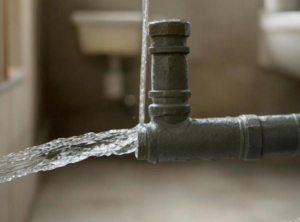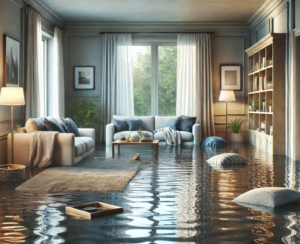When disaster strikes, understanding the distinction between water damage and flood damage can be critical for homeowners and businesses alike. Though they might seem similar, these terms carry distinct meanings, especially when it comes to insurance coverage and restoration procedures. In this blog, we’ll break down the differences between water damage and flood damage, their causes, and how to handle each effectively.
What is Water Damage?
Water damage refers to any destruction caused by water originating from inside your property. Common sources of water damage include:
- Burst pipes: Aging or frozen pipes can crack and release water into your home.
- Appliance leaks: Dishwashers, washing machines, and refrigerators may malfunction and cause water leakage.
- Roof leaks: Damaged or missing shingles can allow rainwater to seep in.
- Plumbing issues: Faulty installations or clogs can lead to overflowing sinks or toilets.
Water damage is typically localized, making it easier to identify and contain. If addressed promptly, restoration can minimize structural damage and prevent mold growth.

What is Flood Damage?
Flood damage, on the other hand, refers to water damage caused by an overflow of water that submerges normally dry land. According to the Federal Emergency Management Agency (FEMA), flooding occurs when water from natural sources impacts two or more acres of land or affects at least two properties. Common causes of flood damage include:
- Heavy rainfall: Intense storms can overwhelm drainage systems.
- River overflow: Rising water levels in rivers or streams can spill over their banks.
- Storm surges: Coastal areas may experience flooding due to hurricanes or tsunamis.
- Snowmelt: Rapid melting of snowpacks can lead to flash floods.
Unlike water damage, flood damage usually affects entire areas, making cleanup and restoration more complex and time-consuming.

Key Differences Between Water Damage and Flood Damage
- Source:
- Water damage originates inside your property (e.g., plumbing or appliance failures).
- Flood damage stems from external sources (e.g., overflowing rivers or heavy rainfall).
- Scope:
- Water damage is typically confined to a specific area or room.
- Flood damage impacts larger areas and multiple properties.
- Insurance Coverage:
- Standard homeowners’ insurance policies usually cover water damage.
- Flood damage requires separate flood insurance, often provided through the National Flood Insurance Program (NFIP).
Responding to Water Damage vs. Flood Damage
While both types of damage require immediate attention, the steps to address them differ:
- For Water Damage:
- Shut off the water source.
- Remove excess water using a wet/dry vacuum or towels.
- Contact a professional restoration company to assess the damage and begin repairs.
- For Flood Damage:
- Ensure safety by evacuating the affected area if necessary.
- Document the damage with photos and videos for insurance purposes.
- Call a flood restoration expert to handle the cleanup and decontamination.
Preventing Water and Flood Damage
Taking preventive measures can save you from costly repairs and heartache. Here are some tips:
- Preventing Water Damage:
- Regularly inspect plumbing and appliances.
- Seal cracks in walls and foundations.
- Clean gutters and downspouts to prevent water buildup.
- Preventing Flood Damage:
- Elevate electrical systems and appliances in flood-prone areas.
- Install sump pumps and backflow valves.
- Create a flood emergency plan and keep important documents in waterproof containers.
Call the Experts
Whether you’re dealing with water damage or flood damage, our team at RestoPros of Hudson County is here to help. With years of experience and state-of-the-art equipment, we can restore your property quickly and efficiently. Contact us today for a free consultation and let us bring your home or business back to life.
By understanding the differences between water and flood damage, you can better protect your property and navigate the restoration process with confidence. Don’t let water win—we’ve got you covered!
